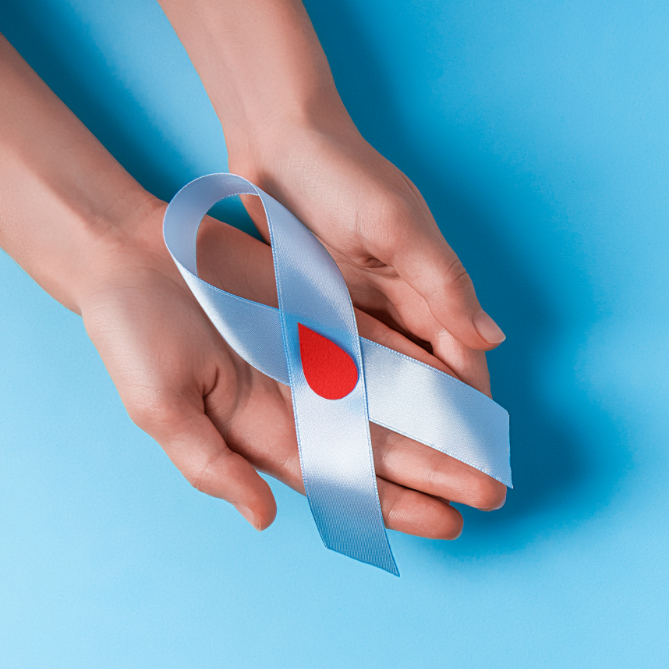November is Diabetes Awareness Month and more than one out of three people have prediabetes, but nine out of ten don’t know they have it. Could you be one of them? Prediabetes is a condition in which your blood sugar is higher than normal but not yet high enough to be diagnosed with diabetes. Your risk of having prediabetes increases if you’re over 45 years old, overweight or obese, or physically active less than 3 times weekly. Having prediabetes is serious. If left untreated, 15% to 30% of people with prediabetes will develop diabetes within five years.
There are different types of diabetes:
- Type 1 diabetes is typically diagnosed in children or young adults who have a hard time producing insulin. Type 1 is much less common as it only affects 5% of people with diabetes. With insulin treatments, these patients can learn to manage their symptoms and enjoy their lives.
- Type 2 diabetes is the most common diagnosis and affects both children and adults whose bodies do not use insulin correctly. It is a disease in which blood glucose levels are above normal. Most of the food we eat is turned into glucose (sugar) for our bodies to use for energy. The pancreas, an organ that lies near the stomach, makes a hormone called insulin to help glucose get into the cells of our bodies. When you have diabetes, your body either doesn’t make enough insulin or can’t use its own insulin as well as it should. This causes sugar to build up in your blood.
- Prediabetes is when your blood sugar level is higher than normal, but not high enough for a diagnosis of diabetes. People with prediabetes are at higher risk for developing type 2 diabetes.
Symptoms of diabetes include:
- increased urination
- extreme thirst
- extreme hunger
- fatigue
- blurred vision
- cuts and bruises that take a long time to heal
- unusual weight loss
- numbness or tingling in the hands or feet
- A person can have prediabetes and have no symptoms
If you are experiencing any of these symptoms, see a doctor right away. Early detection of diabetes can help reduce future health complications.
Get Tested!
Complete a prediabetes screening test and talk with your doctor. If you find you do have prediabetes, the National Diabetes Prevention Program can help you make the lifestyle changes necessary to delay or prevent developing diabetes. Currently, there are Diabetes Prevention Programs offered in the following communities: Belle Fourche, Deadwood, Custer, Platte, Rapid City, Sioux Falls, Spearfish, Sturgis and Yankton. A list of online options are also available. Click here for more information, resources and videos.
Diabetes affects every part of your body. Diabetes increases a person’s risk of going blind, developing high blood pressure, decreasing kidney function and more. The best way to combat diabetes is to prevent it. To decrease your risk maintain a healthy weight, eat plenty of fruits and vegetables, avoid large portion sizes and exercise regularly. Try some of these healthy recipes!
Diabetes Self-Management Education
Living with diabetes can make a person feel scared and powerless. Do you want to take control of your condition and feel more confident in managing your diabetes? If you do, Diabetes Self-Management Education is for you. Commonly referred to as DSME, this program is for anyone newly diagnosed with diabetes, those with a change in their diabetic treatment regimen, individuals using insulin pumps, or persons interested in annual diabetes education. Many healthcare facilities offer this program, and some insurance plans, in addition to Medicaid and Medicare, have DSME as a covered benefit. To find a program near you, contact your doctor.
Sources: South Dakota Diabetes Program, Avera McKennan Weekly Health Tip, Centers for Disease Control and Prevention – Diabetes, & American Diabetes Association
These resources are not a substitute for medical advice. Please consult your healthcare provider to diagnose or treat a health problem or disease.

